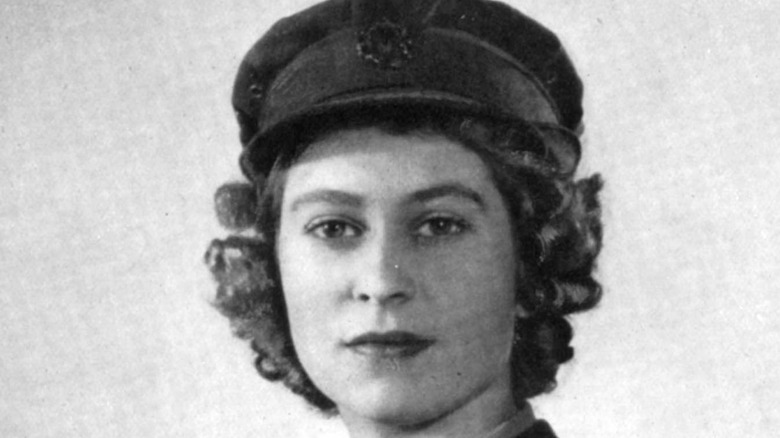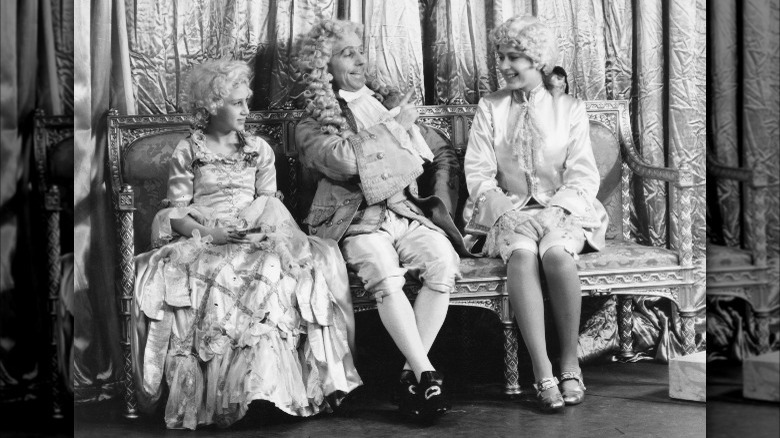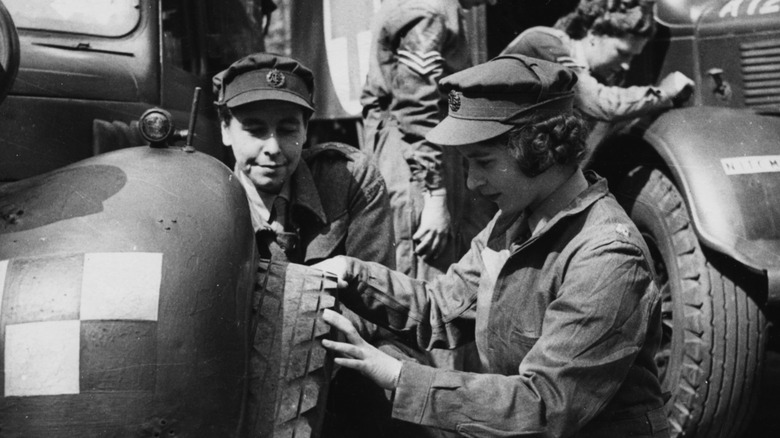The Creative Way Queen Elizabeth Passed The Time Over Christmas During World War II
When World War II broke out in September 1939, Queen Elizabeth II, then a princess, was just 13 years old. King George IV and Queen Elizabeth, visited troops, went to factories, and inspected damaged areas and were away most of the time from their two children, Princess Elizabeth and Princess Margaret. The princesses were evacuated to Windsor Castle to protect them from bombing raids during the war. As reported by the National World War II Museum, many children at that time were sent to small towns and even overseas to protect them from destruction. In 1940, a 14-year-old Princess Elizabeth delivered her first address on the radio program "Children's Hour," wherein she spoke to those separated from their families during the difficult time and said she and her sister sympathized with them.
Throughout most of the war, the two princesses were tucked away in Windsor Castle. According to Town & Country, Princess Margaret came up with an idea to help pass the time while also helping the troops.
The princesses held Christmas plays
Princess Margaret (pictured on the left), then 11 years old, proposed the idea of holding Christmas plays to the head of the Royal School, Hubert Tannar, who thought it was an excellent idea. Tannar then wrote and produced four plays, each held during the Christmas season from 1941 to 1944 (via Town & Country). The princesses participated in the plays, too. In 1941, the production was "Cinderella" and Princess Elizabeth (pictured on the right) played the role of Prince Florizel. The following year, she was Prince Salvador in "Sleeping Beauty." In 1943, the production was "Aladdin," and Princess Elizabeth played the titular role. The last play was "Old Mother Red Riding Boots," and it was the only one where the future queen played a female character, Lady Christina Sherwood.
Interestingly, Prince Philip, Princess Elizabeth's future husband, was in attendance during the production of "Aladdin" and watched her perform. According to People, the plays weren't merely for the enjoyment of the princesses; it was also fundraising for the troops. The amount raised was sent to the Royal Household Wool Fund, an organization that provided wool to manufacture blankets for soldiers who were at war. Six of the costumes the princesses wore during their performances survive to this day.
Other wartime activities
While staying in Windsor Castle the future Queen Elizabeth II continued her studies and took up French and history. In a photograph published by Vogue, Princesses Elizabeth and Margaret were captured sitting together while painting. Her first address was also held at the castle. Apart from performing in the Christmastime plays, the sisters also spent time knitting garments for the Red Cross. In some instances, Princess Elizabeth accompanied her parents to meet the troops.
At 19 years old, Princess Elizabeth signed up for the Auxiliary Territorial Service (ATS), the women's branch of the British Army. She trained as a mechanic and passed her driving course in just two days, and she was made a second subaltern before she was promoted to Junior Commander just months after she joined. As noted by Imperial War Museums, Princess Elizabeth was the first woman of the royal family who had a full-time role in the armed services.


